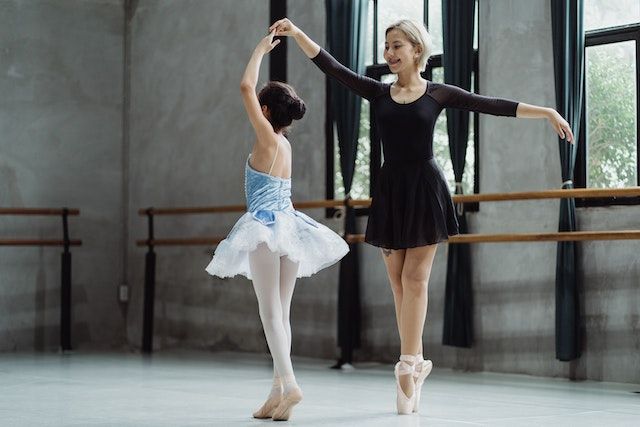How to be a choreographer: best tips to follow
The creation of dance performances for theater shows and the entertainment business is crucially dependent on choreographers. They portray concepts or moods using a variety of moves and styles based on their dancing training and experience.
If dancing is your passion, learning more about this career option will help you decide if it's a good fit for you. In this post, we'll look at what choreographers do, some of their common duties, and some advice you may use in learning how to be a choreographer.
What is a choreographer?
Dance professionals known as choreographers design dance moves and teach others how to perform them. They frequently start out as dancers to gain experience and hone their craft before switching to choreography.

They use their understanding of dance to make motions that express feelings or concepts. Work as a choreographer is possible in a variety of entertainment industries, including dance productions, musicals, advertisements, music videos, television shows, and movies.
Ballet, modern dance, hip-hop, jazz, or musical theater are just a few dance genres in which some choreographers choose to focus.
Any production or performance that includes stylized dance or movement almost certainly has a choreographer on board. In addition to working with companies of professional dancers, directors, actors, or singers in theater, cinema, and opera, choreographers also collaborate with live event producers.
On some projects, a choreographer could work primarily by themselves, designing a movement pattern based on their own ideas. On other occasions, the choreographer must work closely with the production crew or director to accomplish their vision, which can be difficult at times. In any case, a choreographer's main responsibility is to design strong, evocative, and expressive movement patterns.

What does a choreographer do?
Because of how multidisciplinary this position is, choreographers need to be proficient across a range of artistic fields. They will probably work along with costume, set, and lighting designers from the dance, theater, and cinema industries.
The following are only a few of the choreographer's regular duties:
- Experimenting with various dance moves and styles while receiving input from other dancers.
- Explaining to dancers the steps and moves, then modifying them as necessary.
- Combining movement patterns to create new performances or interpretations of dances already performed.
- Attend rehearsals to make sure cast members or dancers are familiar with the moves.
- Provide feedback on the artistic components of dance performances, such as costumes and lighting.
- Directing the selection process for dance or show companies.
- Deciding on music to go with dance moves.
- Making dancing moves that correspond to the music and words.
- Attending trade exhibits and events to network professionally and get inspiration.
- Examining new dance trends and styles to stay updated and create inventive performances.
How to become a choreographer
Begin your education early
Many people who want to work in the dance industry start taking courses when they are young. Lessons may teach you the principles of many genres and aid in the development of your dancing abilities. Most choreographers begin their careers as dancers.

Attend formal education
You should start formal dancing training once you start high school, if not sooner. Start by favoring a specific style of dancing, such as hip-hop or ballet.
While you might concentrate on one or two disciplines, choreographers should continue to learn about all of them. A comprehensive understanding of dance gives you the ability to comprehend different motions and use them in your songs.
Achieve a post-secondary degree
You can seek post-secondary education to prove your abilities, but it's not strictly necessary. Associate, bachelor's, and master's degree programs in dance and choreography are available.
Although not all organizations require candidates for choreographic positions to hold degrees, these schools can improve your knowledge of dance, including its history and business. Additionally, you pick other abilities to hone your technique, such as composition and improvisation in dance, movement analysis, and teaching.
Due to the frequent participation of students in dance or choreography showcases, a post-secondary degree is also a useful way to acquire dance experience. Through these programs, you could potentially develop professional contacts and have access to internship possibilities.

Get work experience
When starting your profession, you could look for chances to showcase your dancing prowess in plays, recitals, or festivals. Create a dance portfolio so you can show prospective employers a visual picture of your dance training and abilities.
Furthermore, you may keep expanding your professional network and your skill set by finding work as a dancer. You get to know other experts in the industry who could be able to lead you to new opportunities. You might also work with choreographers who can mentor you or provide career advice.
Numerous aspirants to choreography get entry-level jobs as dance instructors. Doing so, you may apply your dancing expertise and advise people on how to execute steps with precise rhythm and motions.
How to be a successful choreographer
Keep studying
Maintaining an up-to-date awareness of new dance trends may be achieved by constantly improving your dancing abilities and expertise. Your moves might become more creative by including fresh or current aspects. Instead of restricting your options, learning multiple styles might help you expand your horizons.

Enhance your interpersonal and communication abilities
When creating a dance, you must give dancers precise instructions on how to perform it. If they are having trouble, you must find a means to clearly explain the processes to them. Dancers may take some time to master your steps, so you must exercise patience and work as a team to complete the teaching process successfully.
Network
Choreography is a competitive career. Try to establish connections with theater professionals, such as writers and directors, or producers and executives who work in television and cinema, in addition to your colleagues in choreography. Through their innovative ideas, developing these contacts and a solid reputation might help you grow your career.
Choreographer salary
The pay for a choreographer varies based on the employee and the business. To become a choreographer, you must be successful in a fiercely competitive industry with inconsistent income.
According to the U.S. Bureau of Labor Statistics, which collects information on all civil service jobs, the median hourly wage for dancers and choreographers in 2021 was $19.47.
How to be a choreographer - Conclusion
To become excellent over time, choreography requires patience, perseverance, and devotion. Focusing on the objective and establishing a connection with the setting, culture, and music are the finest ways for a choreographer to continue their dance journey.
Please visit our blog area if you liked this post and want to read more advices about dancing and general information about the music business.
You're here because you love music, so please try to listen to it together with your friends or strangers, at the same time, connected by webcam in CalypsoRoom.
In CalypsoRoom we believe music is the most powerful tool to bring people together, and for this reason, we developed an online music social network where you can connect with friends or strangers while listening to music simultaneously, connected via webcam. Check it out.
Thanks for reading,
CalypsoRoom Team
back
Written by CalypsoRoom Editorial Team
The CalypsoRoom Editorial Team is a skilled and diverse group of writers, researchers, and industry specialists who have access to Calypso's data and information in order to give you broad knowledge about the music industry as well as helpful advice to help you manage your music and dancing career.
Updated January 2023
Company number: 681223
James's Walk 31, Dublin, Ireland
contact@calypsoroom.com
+353 (89) 435 8928





